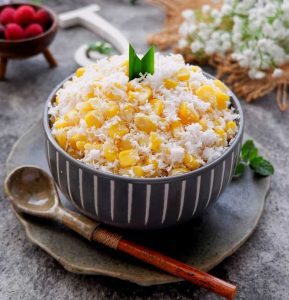Come, Enjoy the Yummy Grontol Jagung at Pasar Gede Solo
"In today's increasingly modern era, finding traditional dishes is increasingly difficult. Yes, now things traditional seems to have been eaten away by the times. Even so, every now and then we keep wanting to reminisce about the food we used to have when we were young. A type of traditional food that is getting scarce is grontol jagung."Published by : administrator - 29/09/2020 11:27 WIB
2 Minutes read.
Grontol jagung is a dish made from boiled peeled-corn, sprinkled with grated coconut and a little salt on top. The sweet taste of boiled corn combined with grated coconut and savory salt makes the taste of grontol delicious. If you buy grontol in traditional markets, you will find grontol packaged or wrapped in banana leaves or teak leaves. Unfortunately, nowadays it is difficult to find grontol except in certain traditional markets.

Image source: www.inibaru.id
Missing this traditional food? You can still find it at Pasar Gede Solo. In the middle area of Pasar Gede, you will find grontol vendors among other food vendors. No need to spend a lot of money, with Rp 5,000 ($ 0.035), you can enjoy a delicious and filling dish of grontol.
Not only filling, though, corn also has good nutrition for the body, including:
- Calories: 96
- Water: 73%
- Protein: 3.4 g
- Carbohydrates: 21 g
- Sugar: 4.5 g
- Fiber: 2.4 g
- Fat: 1.5 gr
Various content in corn has benefits for the body, such as:
- Get ridding of constipation
- Lower the risk of diabetes and control blood sugar
- Good for heart health
- Overcoming depression
- Good for eye health
- Prevent diverticulosis
- Help increase weight
- Prevent hypertension
- Strengthen bones
- Anti-cancer
Although its existence is getting rare, grontol is still pegged at an affordable price. If you live in Solo or plan to go to Solo, don’t forget to stop by Pasar Gedhe and enjoy the grontol!
Source:
Suparni, Ibunda dan Wulandari, Ari. 2012. Herbal Nusantara: 101 Ramuan Tradisional Asli Indonesia. Yogyakarta: Rapha Publishing








